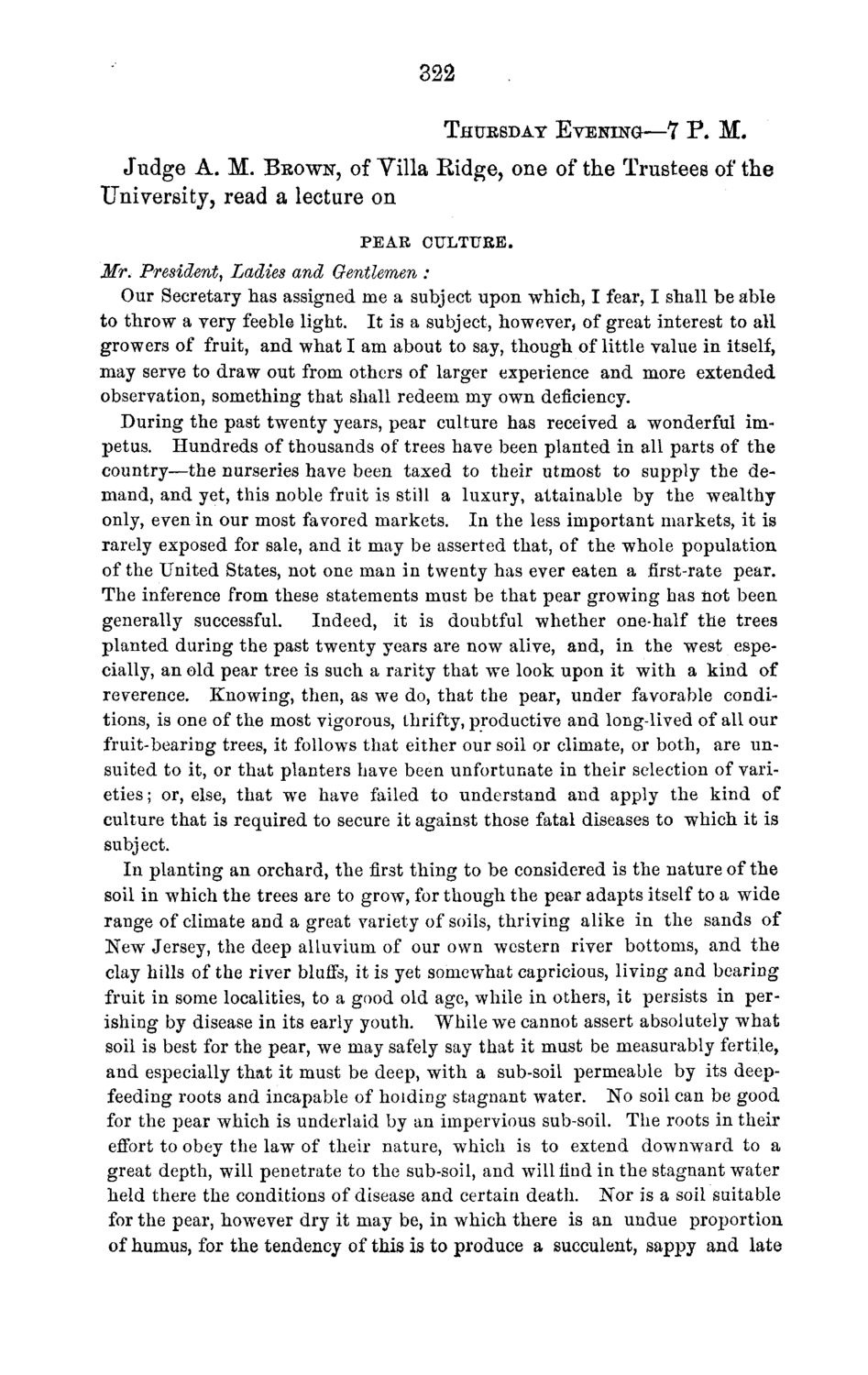| |
| |
Caption: Board of Trustees Minutes - 1870
This is a reduced-resolution page image for fast online browsing.

EXTRACTED TEXT FROM PAGE:
322 THURSDAY EVENING—7 P . M. Judge A. M. BROWN, of Villa Ridge, one of the Trustees of the University, read a lecture on P E A R CULTURE. Mr. President, Ladies and Gentlemen : Our Secretary has assigned me a subject upon which, I fear, I shall be able to throw a very feeble light. It is a subject, however, of great interest to all growers of fruit, and what I am about to say, though of little value in itself, may serve to draw out from others of larger experience and more extended observation, something that shall redeem my own deficiency. During the past twenty years, pear culture has received a wonderful impetus. Hundreds of thousands of trees have been planted in all parts of the country—the nurseries have been taxed to their utmost to supply the demand, and yet, this noble fruit is still a luxury, attainable by the wealthy only, even in our most favored markets. In the less important markets, it is rarely exposed for sale, and it may be asserted that, of the whole population of the United States, not one man in twenty has ever eaten a first-rate pear. The inference from these statements must be t h a t pear growing has not been generally successful. Indeed, it is doubtful whether one-half the trees planted during the past twenty years are now alive, and, in the west especially, an old pear tree is such a rarity that we look upon it with a kind of reverence. Knowing, then, as we do, that the pear, under favorable conditions, is one of the most vigorous, thrifty, productive and long-lived of all our fruit-bearing trees, it follows that either our soil or climate, or both, are unsuited to it, or that planters have been unfortunate in their selection of varieties ; or, else, that we have failed to understand and apply the kind of culture that is required to secure it against those fatal diseases to which it is subject. In planting an orchard, the first thing to be considered is the nature of the soil in which the trees are to grow, for though the pear adapts itself to a wide range of climate and a great variety of soils, thriving alike in the sands of New Jersey, the deep alluvium of our own western river bottoms, and t h e clay hills of the river bluffs, it is yet somewhat capricious, living and bearing fruit in some localities, to a good old age, while in others, it persists in perishing by disease in its early youth. While we cannot assert absolutely w h a t soil is best for the pear, we may safely say that it must be measurably fertile, and especially that it must be deep, with a sub-soil permeable by its deepfeeding roots and incapable of holding stagnant water. No soil can be good for the pear which is underlaid by an impervious sub-soil. The roots in their effort to obey the law of their nature, which is to extend downward to a great depth, will penetrate to the sub-soil, and will find in the stagnant water held there the conditions of disease and certain death. Nor is a soil suitable for the pear, however dry it may be, in which there is an undue proportion of humus, for the tendency of this is to produce a succulent, sappy and late
| |